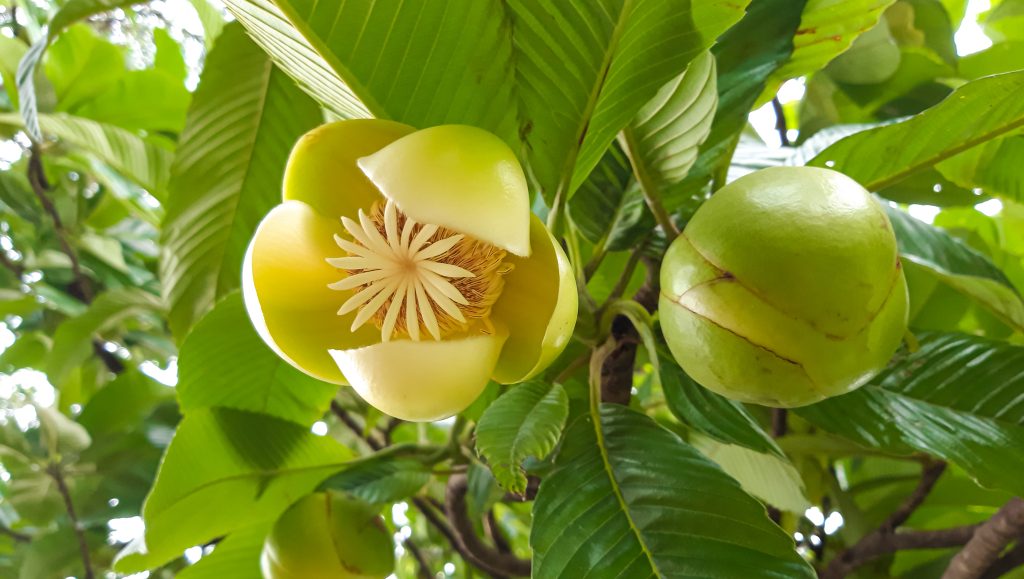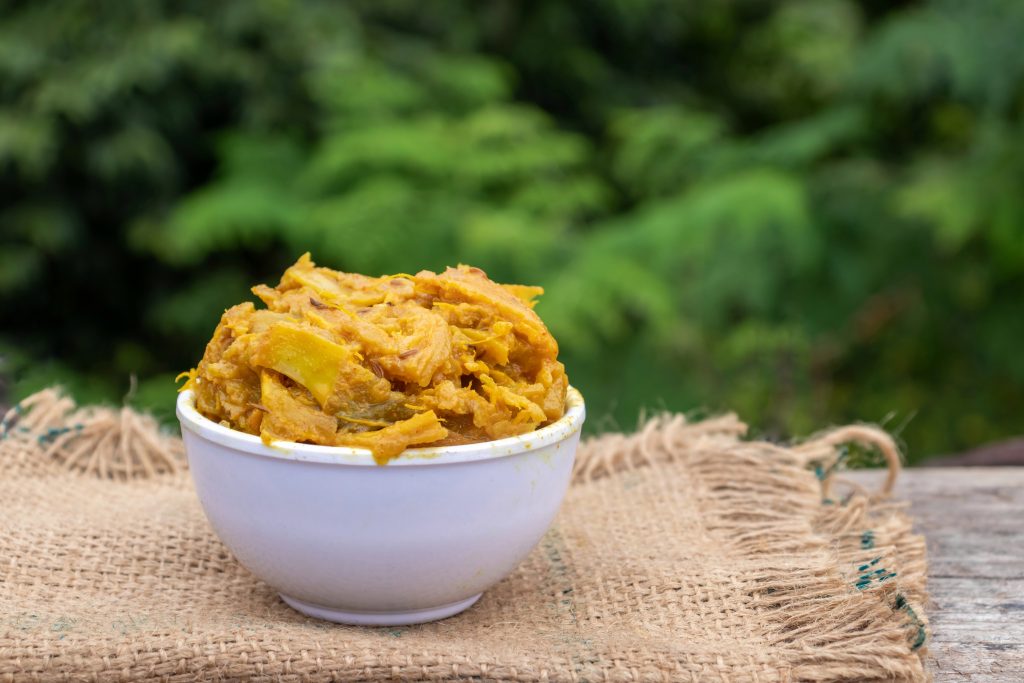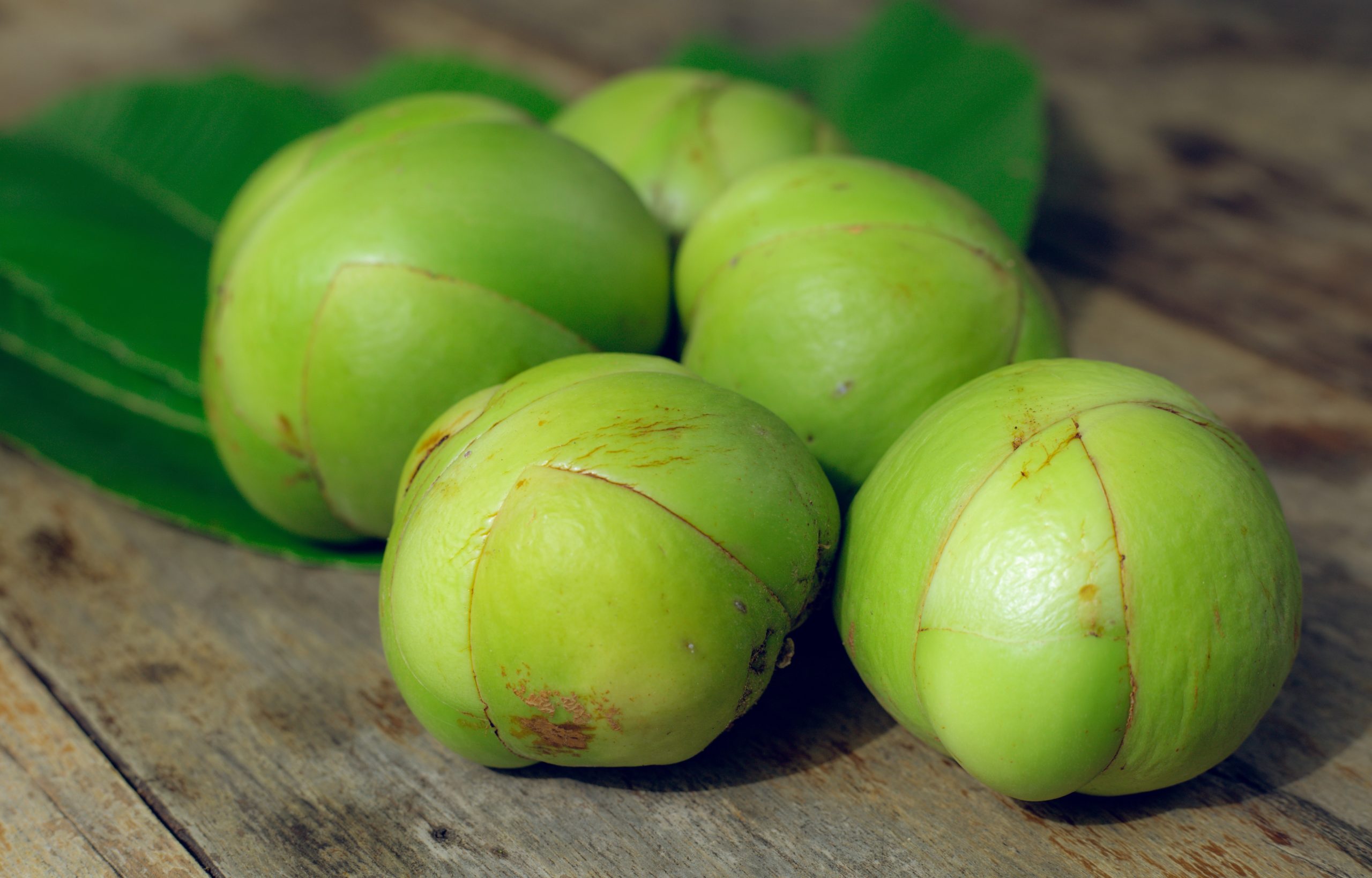The elephant apple is a tropical Asian fruit best known for its funky flavors and slimy texture. Despite its strange appearance and equally bizarre flavors, the fruit has become a staple in Indian cuisine.
Table of Contents
What is an Elephant Apple?
The mysterious elephant apple, also known as the Dillenia indica, wood apple, or chulta, is native to tropical Asia in Thailand, the Philippines, Indonesia, Sri Lanka, Malaysia, and India. Like an apple, this fruit grows on an evergreen tree with beautiful white flowers that bloom to create the exotic elephant apple.
The flavor of the elephant apple is incredibly unique. It’s remarkably pungent, a little foul, and an acquired taste. Many find that the elephant apple’s unusual, slimy, and foul flavors have much in common with durian fruit. It’s both slimy and crunchy simultaneously, with unripe apples and garlic notes.
The History of Elephant Apples
The term elephant apple comes from the fact that wild elephants love to eat these apples! Elephant apple trees grow in the wild in parts of India and Asia because elephants love eating the apples and naturally spread the seeds through their feces. That’s right: elephant apple propagation happens through elephant droppings!
Foraging for wild elephants’ apples is illegal in parts of India. There are still wild elephants in India, and competing with an elephant for an elephant apple in India is a losing battle, so they deemed it illegal for the safety of the residents of southeast Asia.

What Does an Elephant Apple Taste Like?
The flavor of the elephant apple is not something you want to eat raw! When you cut into the firm outside petals, you are hit with a somewhat foul and garlicky aroma. The outside of the elephant apple is nice and firm, while the inside is slimy like jelly.
Eating an elephant apple raw is far from a pleasant experience. The fruit pulp is crunchy and slimy, with notes of bitterness, garlic, and a hint of unripened green apple.
The flavors of an elephant apple are far from a Red Delicious or a sugar apple! The best way to enjoy the unique flavors of the elephant apple is to use it in cooked dishes like curries, jellies, chalta (Indian pickles), or chutney.
How to Tell When Elephant Apples Are Ripe
What’s interesting about the elephant apple is that it’s a fruit that will not continue to ripen once it is removed from the tree. When shopping at a local farmer’s market, picking an elephant apple at the peak of ripeness is essential.
It’s not the type of fruit you can sit on the countertop to ripen over the next few days. So, how can you tell when an elephant apple is ripe?
| Color | The easiest way to check for ripeness is to examine the color of the rind. Unripened elephant apples are entirely green, like the color of a Granny Smith apple. Once they mature, the outside turns a greenish-yellow color with green streaks. |
| Weight | Elephant apples should feel unusually heavy for their size. They average between 5-12 centimeters in diameter and will feel very dense when held in the palm of your hand if ripe. |
| Sound | Another way to tell if the apple is ripe is by shaking it gently. If the stamens shake free from the impressed veins, you should hear a quiet rattle indicating that your apple is ready to eat or cook with. |
Can I Eat Raw Elephant Apples?
Yes, you can eat a raw elephant apple. Will you want to? Probably not.
Elephant apples are a South Asian delicacy and are an acquired taste, especially when consumed raw, like eating an apple. The best way to enjoy raw elephant apples is by making pickles and chutney or combining them with other savory ingredients.
Cooking with Elephant Apples
Before you even fire up the stovetop, knowing how to prepare this mysterious fruit is essential. The petals on the outside are the most flavorful part of the fruit and are used primarily in cooking. The slimy pit on the insides is often discarded.
- Cut the elephant apple in half and remove the pit using a sharp knife.
- Then, stick the knife between the petals and remove them carefully.
- Rince the petals, and they are ready for your recipe!

A few elephant apple recipes for you to try:
Chalta: Raw elephant apples make excellent pickles known as Chalta in India. This chalta recipe infuses bright spices that pair perfectly with the crunchy and garlic bite of elephant apples.
Elephant Apple Chutney: If you’re looking for a fantastic condiment to slather on a burger, elephant apple chutney explodes with bright spices like Indian five spice and chili powder.
Fish Curry with Dry Elephant Apple: For savory dinner dishes, you can’t go wrong with an elephant apple curry, which is very popular in parts of India. This fish curry with dry elephant apple is light and hearty with the perfect pairing of exotic seasonings.
How to Store Elephant Apples
The good news is that elephant apples will not continue to ripen once removed from the tree. The best way to ensure that your apples stay as fresh as possible is to store them in the fridge in the vegetable crisper. They will stay fresh for up to one month if stored properly in the refrigerator.
Nutritional Benefits of Elephant Apples
In parts of India, the humble elephant apple is used medicinally to help alleviate symptoms like upset stomach, fatigue, and anxiety. And based on the elephant apple’s nutritional content, it has some positive health benefits.
One elephant apple has around 59 calories and boasts beneficial vitamins and nutrients like fiber, ascorbic acid, calcium, and phosphorous.
Ascorbic acid, aka Vitamin C, has a variety of functions within the body. It boosts the immune system, builds strong bones and teeth, and can help reduce the risk of certain cancers and heart diseases. Additionally, the phosphorous content in elephant apples helps repair and grow cells and is vital in protein absorption.
Where to Purchase Elephant Apples
Elephant apples are hard to come by. It’s not a type of fruit you can easily pick up at your local grocery store, but all hope is not lost!
As a fruit harvested between October through January, you may have luck picking it up at a farmer’s market or an Asian grocery store during the peak season.

